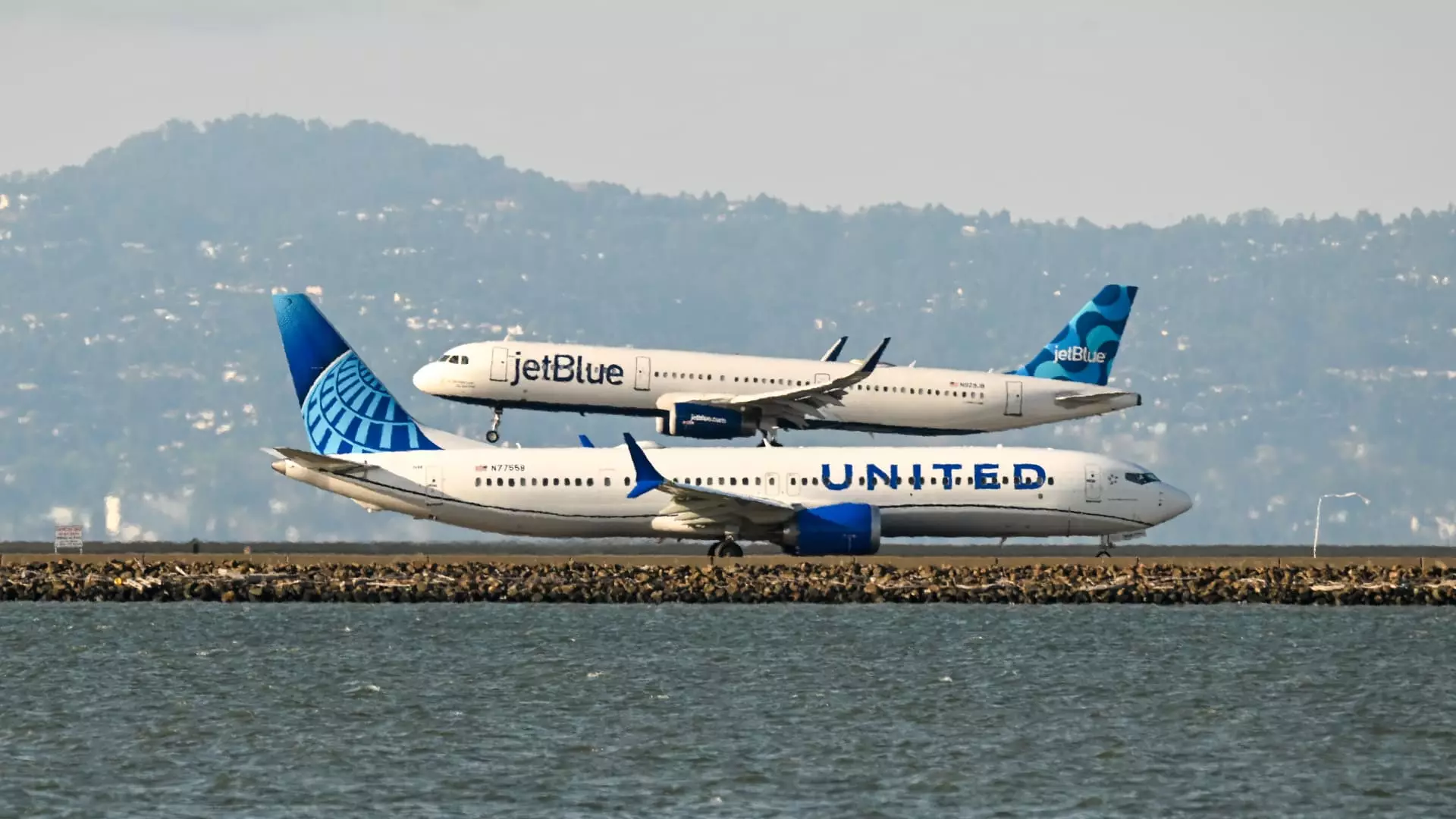In a significant move for the aviation industry, United Airlines announced a partnership with JetBlue Airways aimed at rekindling its connection to New York’s John F. Kennedy International Airport (JFK). This alliance, aptly named Blue Sky, implies more than just shared ticket sales; it highlights United’s commitment to gaining back ground lost, at least in perception, since it vacated JFK in 2015. The partnership comes at a time when competition is fierce and consolidation is associated with better service delivery and differentiated customer experiences, yet re-entering JFK signals United’s resolve to reignite its New York presence.
The choice to formalize partnerships rather than engage in outright mergers is a clear indication of an industry navigating a complex landscape of consumer needs and regulatory hurdles. However, the question that looms large is whether this alliance genuinely offers strategic advantages or is merely a tactical maneuver driven by market pressures. For United, the ramifications are both significant and precarious, as it places a substantial amount of faith not only in JetBlue but also in recovering market share that has predominantly moved to competitors like Delta and American Airlines.
Mutual Benefits or Softening the Blow? The Perception Game
On the surface, this symbiotic relationship promises mutual benefits: shared loyalty programs, expanded flight options, and increased market competitiveness. Yet, the fundamental question remains—how genuine is the collaborative spirit behind this newfound partnership? Both airlines, after all, come from backgrounds of aggressive individual strategies. Prior to this collaboration, JetBlue was struggling to maintain relevance against the backdrop of larger players consolidating power—merging with Delta to create formidable alliances yet failing to cushion themselves from market volatility.
The partnership offers JetBlue customers greater access to United’s extensive network, theoretically enhancing value for both customer bases. However, one must consider the risk of complacensy that can accompany such partnerships. Is it possible that instead of engendering true innovation in service and operations, this alliance could lead to a shared mediocrity? In a world where travelers desire not just new routes but transformative travel experiences, it’s critical for both airlines to maintain a distinct competitive edge while collaborating.
Future Prospects: A Balancing Act of Authority
United’s steadfast intention to operate up to seven daily round-trips at JFK—set to begin in 2027—signals not just a comeback but a strategic play to cement authority in a region where market discrimination exists. With only eight corresponding flights permitted for JetBlue at Newark, one has to wonder whether the value gained from JFK can offset the anticipated challenges of overcrowded schedules and dwindling margins. The FAA has tightly controlled airport capacity, and launching new services amid this limitation raises questions about operational viability—especially when competing against existing, entrenched airlines.
Moreover, this partnership reflects a broader industry trend that seeks to prioritize customer loyalty and facilitate added value through collaborations, such as priority boarding and member benefits across platforms. While these benefits are commendable, regulatory approvals pose significant hurdles that could stifle momentum. The skepticism surrounding the deal reinforces concerns regarding whether it serves consumer interests or simply aims to create a safety net for faltering entities within an uneven market.
Reassessing the Competitive Landscape
While United Airlines hopes to leverage this partnership to enhance its competitiveness, the stark realities of existing market structures cannot be ignored. Contrast the ascension of airlines like Delta, which consistently adapts its strategies to meet consumer demands, against United’s increasingly reactive stance. The recent history of the airline industry has shown that merely seeking out partnerships instead of investing in broad-scope, customer-focused innovation can lead to passive leadership.
Moreover, the critical failure of its previous partnership attempts and the blocked acquisition of Spirit Airlines weigh heavily on JetBlue’s position. Should we expect more of the same from both airlines, particularly given the specter of past failures? The hope is that this commitment to collaboration transforms into actionable strategies that grant travelers a more cohesive and rewarding flying experience. The charge lies not solely on operational tactics but also in fostering a culture that values customer-centric improvements rather than settling into the comfort of existing patterns.
While United Airlines’ return to JFK through collaboration with JetBlue opens the door for potential growth and expansion, it also raises significant questions about the nature of these partnerships in an increasingly competitive airline industry. Their success will depend not just on navigating regulatory environments, but also, crucially, on how both airlines reposition themselves at the intersection of collaboration and innovation.

